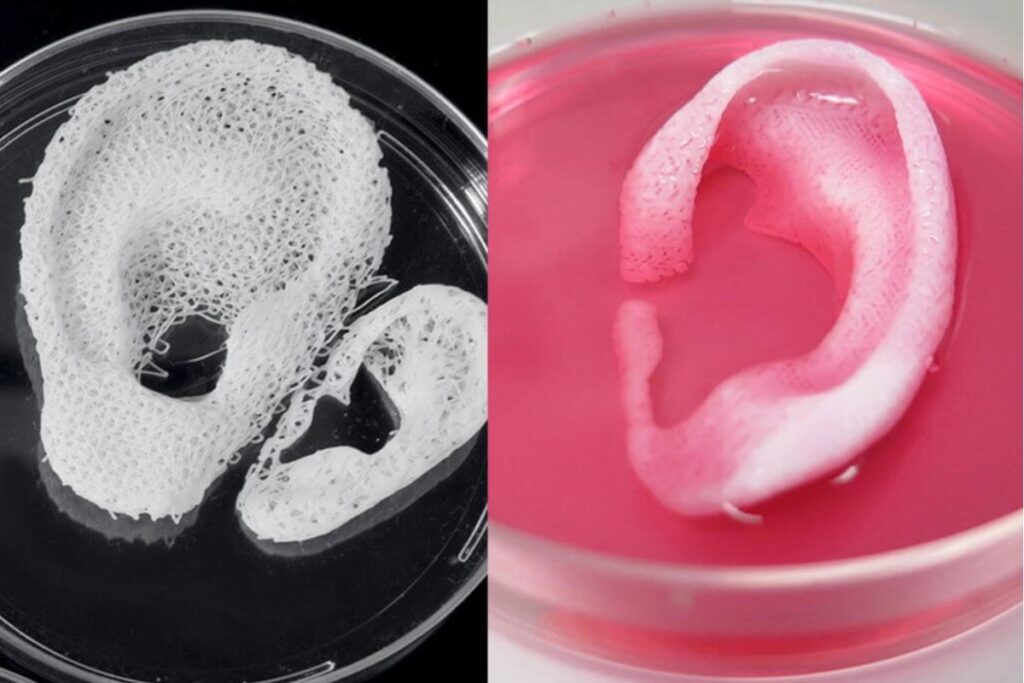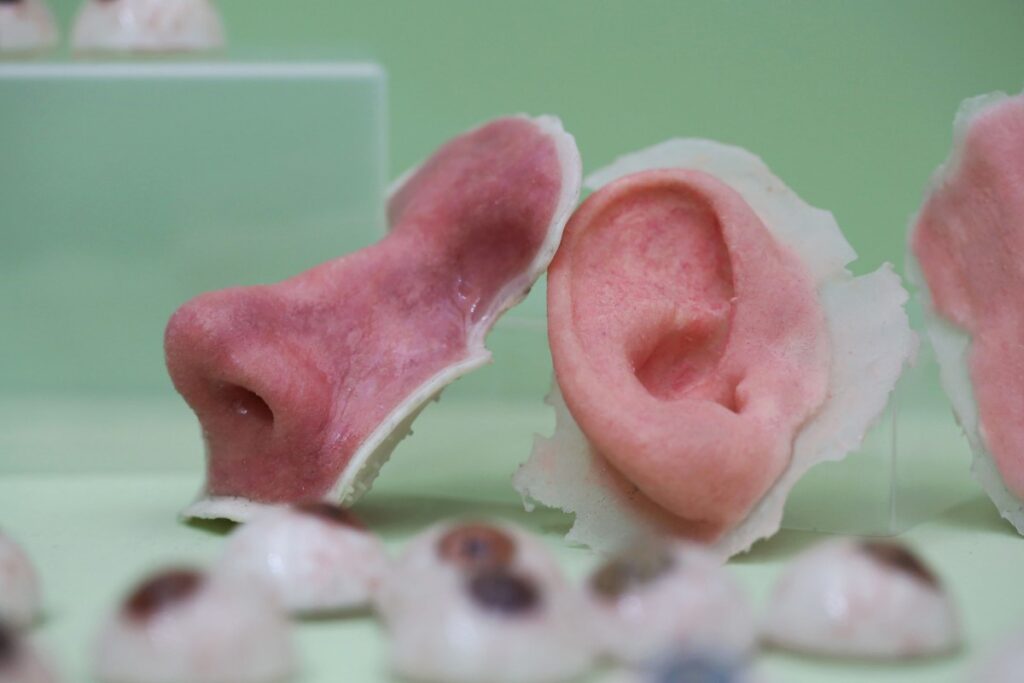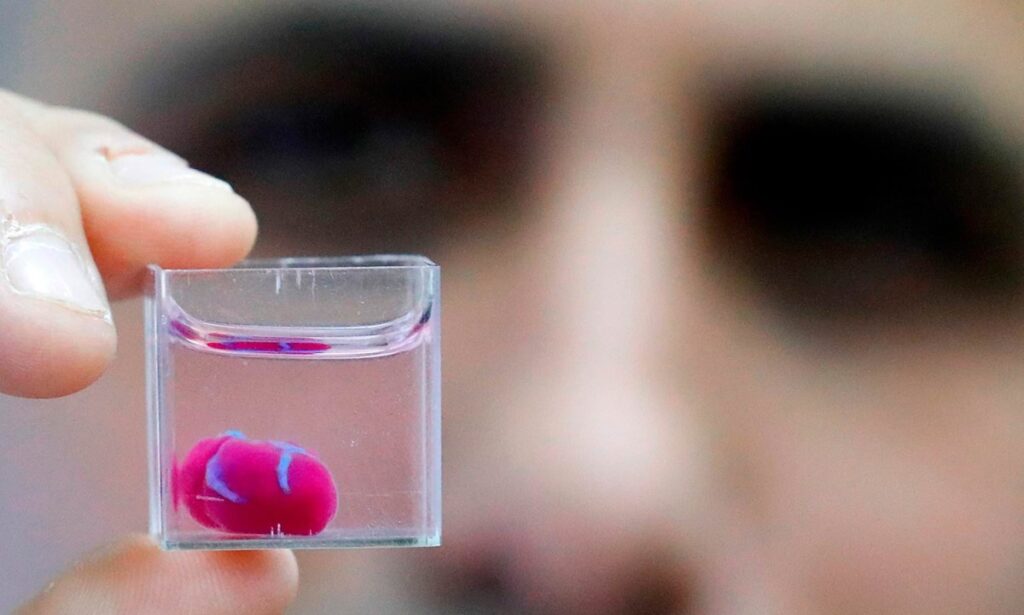Bioprinting
Bioprinting advances in the medical and pharmaceutical industries
Table of Contents
Tradition + Technology
3D Bioprinting is one of the most exciting developments in the medical industry. Thanks to this advanced technology, patients are able to receive implanted lab-grown, skin, tracheas and bladders. These body parts are grown slowly with living cells and artificial scaffolds. 3D bioprinting offers computer-guided precision by printing living cells layer by layer with greater speed to make replacement skin, body parts and may eventually be an option for organs such as hearts, kidneys and livers. This would greatly benefit the 114,000 in the United States in need of transplants. Another name is added to the national transplant waiting list every 10 minutes and on average, 20 people die every day from the the lack of organs available for transplant.
Bioprinting
The bioprinting process is similar to fused deposition modeling (FDM). Instead of filament, bioink is deposited layer by layer at thicknesses of 0.5 mm (less than 1/100th of an inch) or less. As each layer is deposited, it solidifies to hold its shape. The process of blending and solidifying is called cross-linking and is sometimes aided by UV light, specific chemicals and heat via a UV light source.
Wake Forest Institute for Regenerative Medicine in Winston-Salem, N.C. built lab-grown organs by creating artificial scaffolds in the shape of the desired organ and then seeded the scaffolds with living cells. The lab-grown bladders were implanted into patients in 1999.
There are four levels of complexity that need to be considered as part of 3D bioprinting with living cells. First, flat structures (one living cell type) such as human skin. Second, tubular structures such as blood vessels (two major cell types). Third, hollow organs such as the stomach or bladder since they each have more complicated functions and work with other organs. Fourth, organs such as the heart, liver and kidneys that are among the most complex organs of the human body.
Another challenge in 3D bioprinting is figuring out how to seed the 3D-printed organs with both large and small blood vessels that can supply nutrient-rich blood to keep the living tissue healthy. So far, no lab has accomplished this but Organovo has built tissues containing tiny blood vessels about 50 microns or smaller (which is less than 2/1000 of an inch). Leading researchers of companies like Organovo and the Cardiovascular Innovation Institute agree that the solution involves harnessing the self-organization tendencies of living cells. Once researchers figure out how to print items tens of microns or hundreds of microns, then cells can undergo the biological developmental response in order to self-organize correctly.
Researchers at Tel Aviv University have 3D printed a rabbit-sized heart using a patient’s cells and are hopeful that one day they’ll be able to print a human-size heart for implant and replace the need for human donors. It can contract on its own, however, it is incapable of pumping at this stage. With future testing and innovation, they hope 3D printed hearts like this one can help treat patients who have cardiovascular disease. And most recently, Carnegie Mellon University reported they are now able to 3D bioprint functioning pieces of the heart, like a heart valve, using cells and collagen.
Bioprinting Today
What’s being bioprinted by whom
- Skull: University Medical Center Utrecht (Holland)
- Prosthetic Eyes: Fripp Design (England)
- Noses and Ears: Cornell University (USA)
- Synthetic Skin: Wake Forest (USA)
- Vaginas: Wake Forest (USA)
- Breasts: Queensland University of Technology (Australia)
- Kidneys: Hangzhou Dianzi University (China)
- Livers: Cleveland Liver Transplantation (USA)
- Bones & Limbs: Many Companies
- Heart components: Carnegie Mellon University (USA)



Bioink
Bioink uses a patient-specific combination of living cells and a compatible base made up of collagen, gelatin, hyaluronan, silk, alginate or nanocellulose. It’s used for bioprinting artificial organs, pharmaceutical testing, plastic surgery and skin grafting, bone tissue regeneration, prosthetics and dental applications. Over the last decade, 3D printers have been built that can print artificial scaffold and living cells at the same time. This process includes liquid glue with hardens into the consistency of gummy candy as it dries out. Stem cells taken from a patient’s fat or bone marrow can provide the 3D-printing material for making an organ that the body won’t reject.
Leading Bioprinting 3D Print Manufacturers:
- 3D Bioplotter – EnvisionTec
- Bioscaffolder – Gesim
- Inkredible+ – Cellink
- Biofactory – RegenHu
- Revolution – Ourobotics
- Bio3D Explorers – Bio3D technologies
- CellJet Cell Printer – Digilab
- BioAssemblyBot, advanced solutions
- Regenova – Cyfuse
- NovoGen MMX – Organovo
- Dimatrix Materials Printer – Fujifilm
- Poietis
- Nscrypt
- Aether
- Allevi
- Fabion
Bioprinting Research Companies
- Organovo
- Modern Meadow
- MedPrin
- TeVido
- BioBots
- N3D BioSciences
- 3Dison
- 3DBio
- Aspect
- Cyfuse